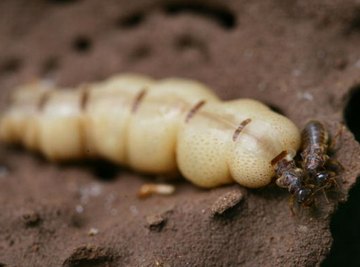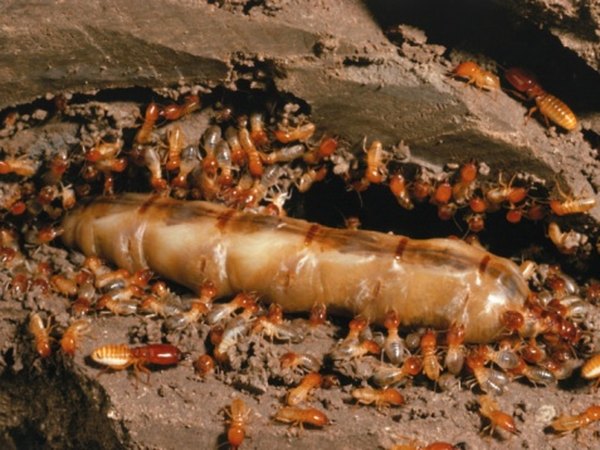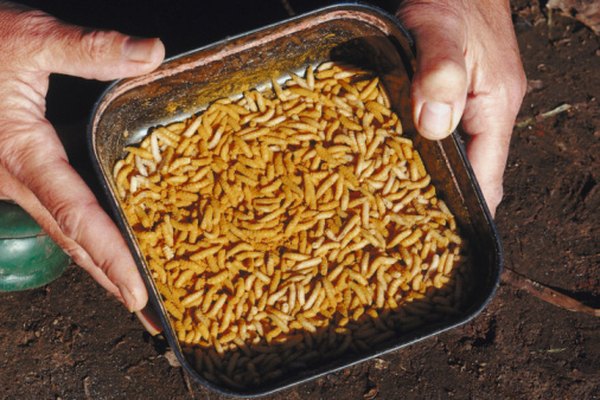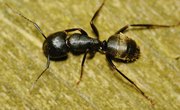
Several species of insects can burrow into Sheetrock, destroying walls and wreaking havoc in a home. If you can properly identify the pests living in your drywall, removing them will be easier. Most insects start as wormlike larvae, so pests that look like bugs may actually be an insect infestation. If you see worms burrowing into drywall, contact a pest control specialist immediately. Insect larvae quickly grow into adults that can destroy an entire wall.
Termites

Termites are the most common cause of Sheetrock destruction, and a colony can quickly destroy the interior of a wall. They live in all areas of the United States and are especially common in the Southeast. Termite larvae are white with soft bodies and look like worms. Just like adult termites, they feed on wood and can bore into Sheetrock.
Powder Post Beetles
Powder post beetles are a group of wood-boring beetles that can cause immense damage to homes. Their larvae are white, yellow or green C-shaped worms. They dig tunnels in Sheetrock and feed on its starch components. They eat a huge variety of woods and are common in all areas of the United States. Adults have long, hard bodies and are typically black, brown or gray.
Maggots

In humid areas of the United States, maggots may infest drywall. These tiny white worms are actually fly larvae and feed on decaying organic material. The presence of maggots indicates that there may be other things living in the wall like squirrels. When these animals leave droppings or die in the wall, maggots take up residence and eat the remains. The presence of maggots usually indicates that too much moisture is getting into the walls, because maggots cannot survive in very dry environments.
Other Worms
Several other species of worms are less common but may still infest drywall. Waxworms are moth larvae that eat wax and can chew through drywall. Night crawlers may also infest sheetrock. Though they do not feed on the sheetrock itself, the climate inside walls is an ideal nesting ground for them, and they are capable of burrowing into it. The presence of either waxworms or night crawlers is normally indicative of holes in the wall. If you see these worms, you may have a problem with termites or powder post beetles, which have drilled holes that allowed other worms to access the wall.
References
- "National Audubon Society Field Guide to North American Insects and Spiders"; National Audubon Society; 1980
- "National Wildlife Federation Field Guide to Insects and Spiders and Related Species of North America"; Arthur Evans, Craig Tufts; 2007
- Termites.com: Termite Larvae Info
About the Author
Brenna Davis is a professional writer who covers parenting, pets, health and legal topics. Her articles have appeared in a variety of newspapers and magazines as well as on websites. She is a court-appointed special advocate and is certified in crisis counseling and child and infant nutrition. She holds degrees in developmental psychology and philosophy from Georgia State University.
Photo Credits
China Photos/Getty Images News/Getty Images
